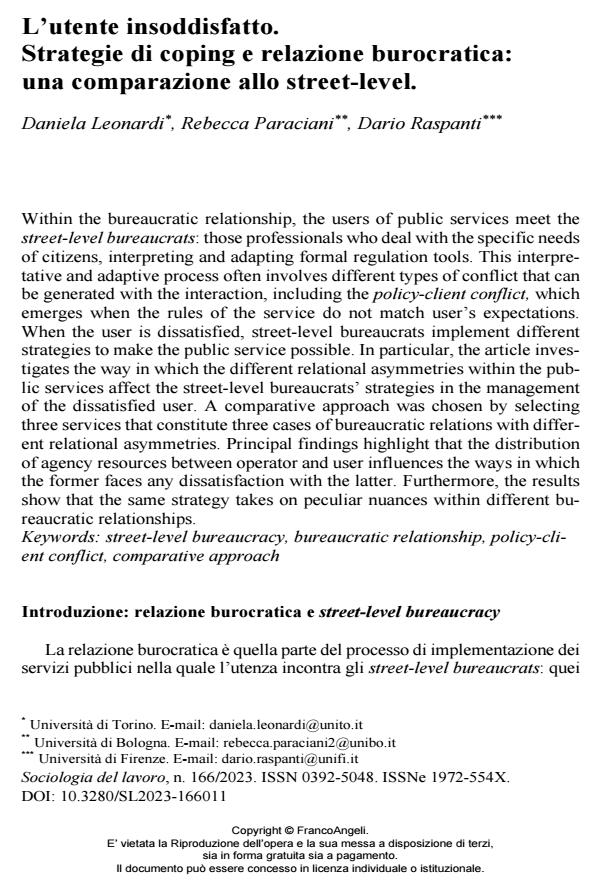L’utente insoddisfatto. Strategie di coping e relazione burocratica: una comparazione allo street-level.
Journal title SOCIOLOGIA DEL LAVORO
Author/s Daniela Leonardi, Rebecca Paraciani, Dario Raspanti
Publishing Year 2023 Issue 2023/166
Language Italian Pages 20 P. 251-270 File size 258 KB
DOI 10.3280/SL2023-166011
DOI is like a bar code for intellectual property: to have more infomation
click here
Below, you can see the article first page
If you want to buy this article in PDF format, you can do it, following the instructions to buy download credits

FrancoAngeli is member of Publishers International Linking Association, Inc (PILA), a not-for-profit association which run the CrossRef service enabling links to and from online scholarly content.
Within the bureaucratic relationship, the users of public services meet the street-level bureaucrats: those professionals who deal with the spe-cific needs of citizens, interpreting and adapting formal regulation tools. This interpretative and adaptive process often involves different types of conflict that can be generated with the interaction, including the policy-client conflict, which emerges when the rules of the service do not match user’s expectations. When the user is dissatisfied, street-level bureaucrats implement different strategies to make the public ser-vice possible. In particular, the article investigates the way in which the different relational asymmetries within the public services affect the street-level bureaucrats’ strategies in the management of the dissatis-fied user. A comparative approach was chosen by selecting three ser-vices that constitute three cases of bureaucratic relations with different relational asymmetries. Principal findings highlight that the distribution of agency resources between operator and user influences the ways in which the former faces any dissatisfaction with the latter. Furthermore, the results show that the same strategy takes on peculiar nuances within different bureaucratic relationships.
Keywords: street-level bureaucracy, bureaucratic relationship, policy-client conflict, comparative approach
Daniela Leonardi, Rebecca Paraciani, Dario Raspanti, L’utente insoddisfatto. Strategie di coping e relazione burocratica: una comparazione allo street-level. in "SOCIOLOGIA DEL LAVORO " 166/2023, pp 251-270, DOI: 10.3280/SL2023-166011